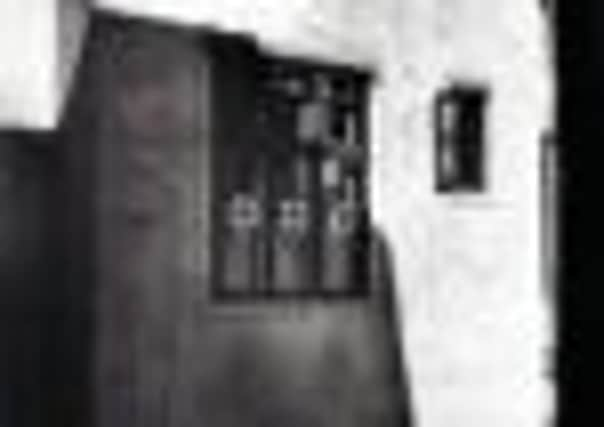Art review: Edith Tudor-Hart: In the Shadow Of Tyranny, Scottish National Portrait Gallery


Or this: a young man being arrested and marched away to an uncertain fate. Edith Tudor-Hart’s early photographs of Vienna in the 1930s capture the city’s transition from democracy to Austrofascist tyranny with a clear eye and a chill blast of history.
Tudor-Hart, who moved to Britain between the wars and whose photographs are on show at the Scottish National Portrait Gallery, was a low-level spy who may have been involved in turning Kim Philby. It makes her life sound like an irresistible drama. But the truth is far darker, far sadder and in some surprising senses far more optimistic.
Advertisement
Hide AdBorn Edith Suschitzky, she grew up in radical Jewish circles in Vienna and trained at the legendary Bauhaus in Dessau. Her early surviving photographs show the modernist influence of her education, but as the times darkened and the Austrofascists came closer to power, her camera captured the growing tensions.
Tudor-Hart’s father, a bookseller and progressive publisher who published pamphlets on subjects like women’s education, committed suicide in April 1934, shortly after the Social Democrat defeat at the election of 1932. Tudor-Hart herself was arrested. In 1933, she and her husband, a British doctor, escaped to England.
Her starkest image is not of the tense Vienna streets, but of an empty apartment building. In one window someone has pasted a swastika in each of its three panes. Next door a window lies open on to a forbidding darkness. It is a sunny day but the building is in shade. A shadow has fallen over Europe.
In Britain, Tudor-Hart attended and recorded demonstrations and communist meetings and photographed left-wing celebrities like the African-American singer Paul and the pioneering architect Ernö Goldfinger. It makes one think that she must have been a hopeless spy.
Her documentary photographs, of London life and poverty, of miners in Wales and workers in Tyneside, are striking. In 1935 she made her most famous image, Child Staring Into Bakery Window. Taken in Whitechapel, it shows a smudged-faced child of indeterminate age and sex whose knitted jumper is a mess of holes. The child stares dumbfounded through the glass. The point of view is so close up you can read the baker’s labels: a cornucopia of bath buns, jam tarts and cinnamon rolls.
A left-wing pamphlet later published the picture side by side with a photograph of “Jubilee”, the first baby chimp born at London Zoo. Jubilee’s diet was better. In 1939, Lilliput magazine juxtaposed her image of a poodle parlour and preening pooch next to a shocking image of a filthy back court of Gee Street in Finsbury Park. This was England.
Advertisement
Hide AdUsing her Rolleiflex camera held at the waist, the photographer could get up close and approach her subjects without intimidation. This technique was most successful when it came to her most remarkable subject – children. In Austria she had trained as a Montessori teacher. In London, her close contacts included pioneers of child psychology and psychoanalysis, among them Donald Winnicott. It is her eye for children as real people, not ciphers nor mini-adults, that now seems so modern.
In 1933, she pictured small children in medical centres receiving light treatment for vitamin deficiencies. In the post-war era, they come out into the light. Her illustrations for the physical education textbook Moving And Growing, made it a resounding success. Children dance and skip, inhabit their bodies in self-absorption. Adults are peripheral, absent.
Advertisement
Hide AdIn Aberdeenshire, in a commission for Picture Post, she recorded fellow Austrian émigré Karl Konig’s remarkable Camphill School for children with learning disabilities. The article itself is hopelessly outdated, as is much of the educational philosophy, but it’s the ambition for change that is so moving. The tender relationship between adults and children with communication difficulties is striking. The pictures show the way that musical sounds, or touch, or the warmth of sun on a face, can talk as much as words.
If curator Duncan Forbes and photographers Owen Logan and Joanna Kane have resurrected an amazing archive, Tudor-Hart’s own life is curiously out of focus. Her struggles and sorrows are mute beneath the weight of her images. Her late life feels only half-lived: she struggled under the scrutiny of the security services until her death in 1973; she destroyed much documentation, including her list of negatives. As a woman photographer with left-wing associations, work became scarce. As a communist and a suspected traitor she was blacklisted and in the 1950s she gave up photography altogether.
What’s left, or rather what has been patiently reconstructed, is an impassioned record of the terrible long shadow of tyranny in Europe, and of a divided Britain that makes you both deeply ashamed and occasionally proud.
This week, in a country torn by an atmosphere of polarised rhetoric around welfare benefits and reeling at the terrible deaths of the Philpott children, it is Hart’s images of children that seem her lasting legacy.
You think of the starving child at the bakery window, the chelsea bun just out of reach, and you think of the comforting hand of an adult reaching out to a little girl at the Camphill School. The children dancing in their gym halls have upturned hands and heads, full of hope and energy.
Twitter: @moirajeffrey
• Edith Tudor-Hart: In the Shadow Of Tyranny is at the Scottish National Portrait Gallery, Edinburgh, until 26 May